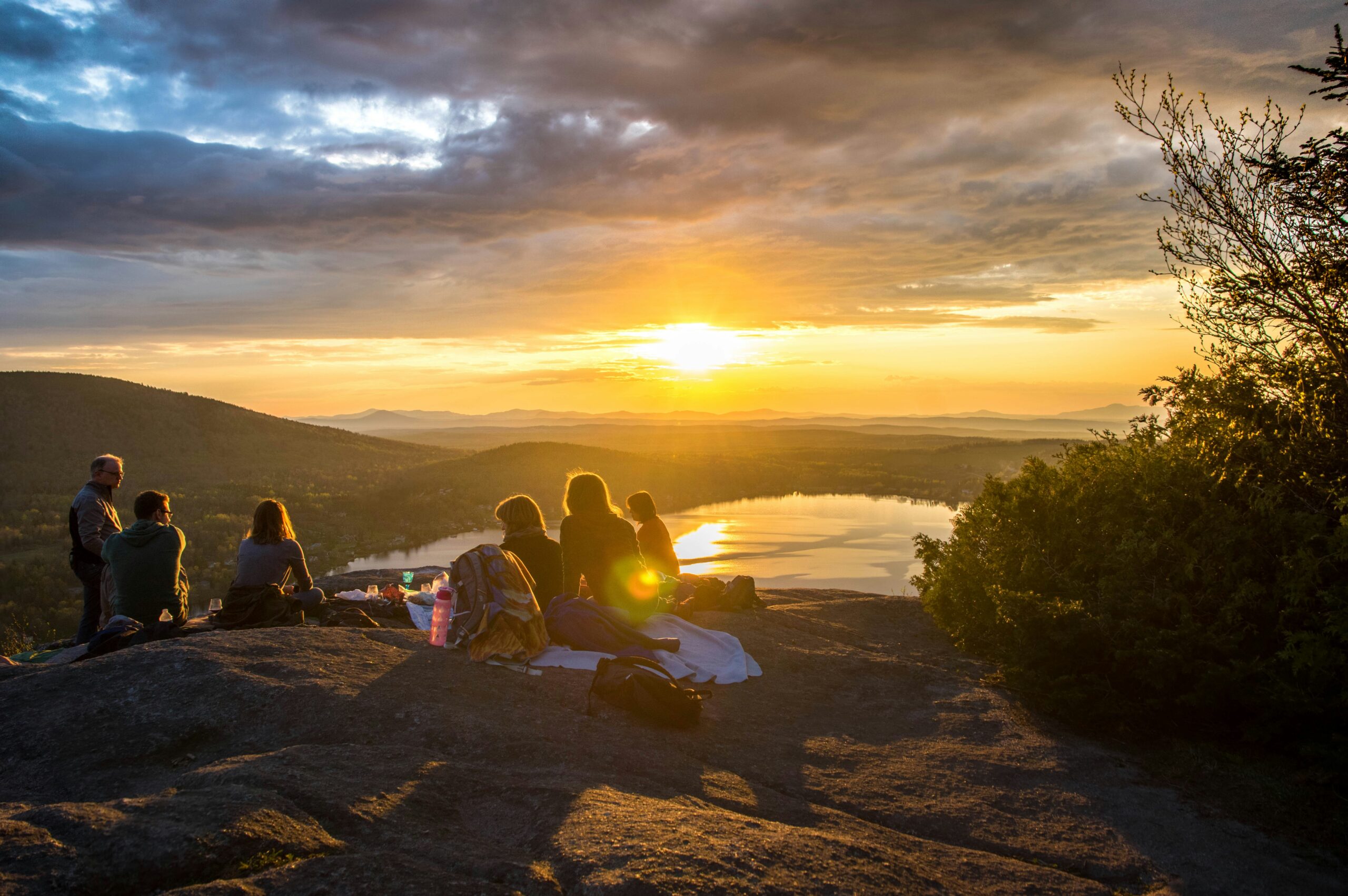If you're planning a climb up Mount Shasta, you might be wondering if there are any restrictions on the size of your group. After all, safety is of paramount importance when taking on such a formidable peak. In this article, we'll explore whether there is a maximum group size allowed when climbing Mount Shasta and delve into the reasons behind any potential limitations. So, if you're eager to hit the trails with a group of fellow adventurers, let's find out if there are any restrictions standing in your way.

Understanding Mount Shasta
Introduction to Mount Shasta climbing
Mount Shasta, located in the breathtaking Cascade Range of Northern California, is an iconic destination for climbers from around the world. Rising majestically to a height of 14,179 feet, this beautiful peak offers a thrilling challenge to both seasoned mountaineers and novice climbers alike. Standing alone as the second highest volcano in the United States, Mount Shasta promises a unique and awe-inspiring experience for adventurers seeking to conquer its slopes.
Popularity of Mount Shasta
Mount Shasta's popularity as a climbing destination has grown significantly over the years, attracting thousands of climbers annually. Its accessibility, diverse terrain, and stunning alpine beauty make it a magnet for outdoor enthusiasts seeking both a physical and spiritual experience. Whether it's the allure of conquering a majestic peak or the desire to witness the breathtaking panoramic views from the summit, Mount Shasta has established itself as a must-visit destination for climbers of all levels of expertise.
Challenges of Climbing Mount Shasta
While the allure of climbing Mount Shasta is undeniable, it is essential to recognize and prepare for the various challenges that climbers may face on this formidable peak. Mount Shasta's high elevation, unpredictable weather conditions, and steep, glaciated slopes demand a certain level of physical fitness, technical skill, and mental resilience. The mountain's volcanic nature adds an element of unpredictability, as climbers must be prepared to navigate crevasses, icefalls, and potentially hazardous conditions. Proper preparation, training, and a respectful attitude towards the mountain are paramount for a safe and successful climb.
Permits and Regulations
Requirement of Wilderness permits
To ensure the preservation of Mount Shasta's delicate ecosystems and manage the number of climbers, wilderness permits are required for all climbers venturing beyond the trailheads. These permits are obtainable from the Mount Shasta Ranger Station and are essential for accessing the various climbing routes on the mountain. Wilderness permits not only help protect the environment but also serve as a safety measure, ensuring that climbers are accounted for and can be assisted in the event of emergencies.
Cost of Permits
While the wilderness permits for climbing Mount Shasta are a necessary requirement, they also come at a cost. The fees associated with these permits help fund the maintenance of trails, infrastructure, and the management of the climbing areas. The current pricing for wilderness permits varies depending on the climbing season and the specific routes chosen. It is important for climbers to budget for these fees accordingly to avoid any last-minute financial surprises.
Summer vs Winter Permits
The permitting process for climbing Mount Shasta differs depending on the season. During the summer months, from May 15th to October 31st, a self-issued permit is required and can be obtained at the trailheads. However, during the winter months, from November 1st to May 14th, climbers must apply for a permit in advance through the Mount Shasta Ranger Station. Winter climbing permits are limited due to the additional hazards associated with snow and ice conditions, making prior planning and coordination crucial for a safe and successful winter ascent.
Group Size Restrictions on Mount Shasta
The magic number 10
When climbing Mount Shasta, there is a maximum group size limit set at 10 individuals per party. This means that no more than 10 climbers can be part of the same group and ascend the mountain together. This restriction applies regardless of whether the climbers are friends, family, or part of a guided expedition. It is essential for climbers to understand and abide by this rule to ensure safety, minimize environmental impact, and streamline the management of trail congestion.
Reasons behind limiting group size
The decision to restrict the group size on Mount Shasta is rooted in several factors. Firstly, it allows for better management of the climbing routes, reducing the risk of overcrowding and potential conflicts among climbers. Secondly, it helps maintain the delicate alpine environment by minimizing disturbances caused by large groups, including excessive noise, trampling of vegetation, and increased waste generation. Lastly, limiting group size enhances safety, as smaller groups are easier to manage and evacuate in the event of emergencies.
Exceptions to the group size limit
While the general rule limits group sizes to 10 individuals, there are exceptions to this regulation. Specifically, educational programs and commercial services are allowed to operate with larger group sizes under certain conditions and guidelines. These exceptions cater to specific circumstances where the oversight and coordination of larger groups are deemed necessary, while still ensuring safety and environmental responsibility.
Impact of Large Groups on Mount Shasta
Environmental concerns
Large groups of climbers on Mount Shasta can have a significant impact on the fragile alpine environment. Heavy foot traffic, trampling of vegetation, and the accumulation of waste can degrade the natural beauty of the mountain and disrupt the delicate ecosystems that exist at higher elevations. Steps are being taken to mitigate these concerns, including the implementation of Leave No Trace principles and ongoing education campaigns to promote environmental awareness among climbers.
Management of trail congestion
The management of trail congestion is another critical factor influenced by group size on Mount Shasta. With limited routes to the summit, a large influx of climbers can lead to bottlenecks, slower progress, and even potential accidents. By restricting group sizes, the authorities are able to better manage the flow of climbers, reduce trail congestion, and ensure a safer and more efficient climbing experience for all.
Ensuring safety of climbers
The safety of climbers is paramount on Mount Shasta, and the limitation on group sizes plays a vital role in this regard. Smaller groups are easier to monitor, especially in challenging or adverse weather conditions where visibility and communication can be compromised. With fewer climbers in a group, it becomes easier to coordinate evacuation or provide assistance in case of emergencies, ultimately enhancing the overall safety of the climbing experience.

Defining a Group for Climbing
Minimum number to form a group
To ensure effective management and compliance with regulations, a group for climbing Mount Shasta must consist of a minimum of two individuals. This requirement is in place to provide climbers with a level of safety in the event of emergencies or unexpected situations. Having a second person present increases the likelihood of receiving help and can make a significant difference in managing potential challenges on the mountain.
Requirements for a Group Leader
Within each climbing group, it is crucial to have a designated group leader who assumes the responsibility of coordinating and leading the ascent. The group leader plays a vital role in decision-making, safety awareness, and adherence to the regulations. The leader should possess adequate mountaineering experience and the skills necessary to make informed decisions, particularly in challenging situations. Climbers are encouraged to choose their group leader wisely and ensure that they possess the necessary qualifications to lead the ascent.
Rules about splitting a large group into smaller ones
In cases where a large group wishes to climb Mount Shasta, they may be required to split into smaller groups to adhere to the maximum group size limit of 10 climbers. It is important to note that each group must maintain a reasonable distance from the other groups to avoid inadvertently creating a larger collective unit. Additionally, climbers should designate specific time frames and meeting points for regrouping during the ascent and descent to ensure effective coordination and safety.
Penalties for Over-Sized Groups
Possible fines and penalties
Climbers who violate the group size restrictions on Mount Shasta may be subject to fines and penalties. These penalties are in place to enforce compliance with the regulations and discourage the formation of large groups that can undermine safety and environmental conservation efforts. The fines may vary depending on the severity of the violation and are intended to promote responsible climbing practices among all climbers.
Resetting of permits for oversize groups
In some instances, climbers who inadvertently violate the group size restriction may be given the opportunity to correct their oversight. If the group size exceeds the permitted limit, climbers may be required to split into smaller parties in order to continue their ascent. Permits may need to be adjusted accordingly to reflect the changes in group size, ensuring that climbers comply with the regulations while still being able to enjoy their climbing experience.
Reporting of unauthorized large groups
It is crucial for climbers on Mount Shasta to be vigilant and report any unauthorized large groups they encounter. This helps protect the integrity of the climbing experience for all and ensures that enforcement measures can be taken to address non-compliance effectively. Climbers are encouraged to communicate with the appropriate authorities or contact the Mount Shasta Ranger Station to report any violations observed during their ascent.

Educational Program Exemptions
Allowances for educational programs
Educational programs, such as university-sponsored climbing courses or research expeditions, may receive exemptions to the group size restrictions on Mount Shasta under specific circumstances. These exceptions recognize the need for additional oversight and instructional capacity when facilitating educational experiences in an alpine environment. While larger group sizes may be permitted, the educational program is still responsible for adhering to safety guidelines and minimizing environmental impact.
Terms and conditions for educational groups
Educational groups seeking exemptions from the group size restrictions must comply with certain terms and conditions. These may include providing proof of official educational affiliation or accreditation, demonstrating a comprehensive safety plan, and outlining specific measures to mitigate environmental impact. The authorities reserve the right to review and approve each educational group's exemption request on a case-by-case basis, ensuring that the educational objectives are met while still maintaining safety and sustainability.
Process of applying for an educational group exemption
Educational groups interested in applying for an exemption to the group size restrictions must submit a formal request to the Mount Shasta Ranger Station. This request should outline the nature of the educational program, the intended group size, the qualifications and experience of the instructors, and the safety and environmental precautions that will be implemented. The authorities will review each request thoroughly and provide guidance on any additional requirements or modifications needed to grant the exemption.
Commercial Services for Climbing Mount Shasta
Role of commercial outfitters
Commercial outfitters play a significant role in facilitating climbing experiences on Mount Shasta. These professional organizations offer guided ascents, instruction, and logistical support for climbers of all skill levels. They are responsible for ensuring compliance with all regulations, including group size restrictions, while providing an exceptional and safe climbing experience. Commercial outfitters are knowledgeable about the mountain's conditions, possess essential mountaineering skills, and are equipped to handle emergencies that may arise during the ascent.
Limits on number of clients per guide
To maintain safety and maximize the quality of the climbing experience, commercial outfitters must adhere to specific limitations on the number of clients per guide. These limitations ensure that each climber receives adequate attention, guidance, and supervision throughout the ascent. By preventing overcrowding and maintaining a manageable guide-to-client ratio, commercial outfitters can ensure the safety and satisfaction of their clients while effectively managing the impact on the mountain and its environment.
Impact of the group size limit on commercial services
The group size limit on Mount Shasta has a direct impact on the operations of commercial outfitters. By restricting the number of climbers in a group, commercial services must carefully plan their expeditions, manage their resources, and adjust pricing accordingly. While this may pose logistical challenges, the group size limit ultimately benefits the climbers by promoting safety, minimizing environmental impact, and creating a more intimate and enjoyable climbing experience.
Preparation for Climbing Mount Shasta
Physical fitness requirements
Climbing Mount Shasta demands a high level of physical fitness due to the mountain's challenging terrain, elevation gain, and demanding weather conditions. It is crucial for climbers to engage in a targeted training program to build strength, endurance, and cardiovascular fitness. Activities such as hiking, running, weight training, and interval training can help prepare climbers for the physical demands they will encounter on the mountain. Consulting with a healthcare professional and hiring a personal trainer or guide is advisable to ensure a safe and effective training regime.
Equipment checklist
Proper equipment is essential for a safe and successful climb on Mount Shasta. Climbers must have suitable clothing, including layers to protect against changing weather conditions, as well as sturdy hiking boots, crampons, ice axes, helmets, and harnesses. Other essential items include a backpack, food and water provisions, sunscreen, sunglasses, a headlamp, a map and compass, a first aid kit, and appropriate climbing ropes and protection. Before embarking on the climb, climbers should thoroughly review and ensure they have all the necessary equipment on their checklist to avoid any oversights.
Training for altitude and cold conditions
Mount Shasta's high elevation and cold temperatures pose unique challenges for climbers. At higher altitudes, the air becomes thinner, making it harder to breathe and increasing the risk of altitude sickness. To mitigate these effects, climbers should gradually acclimatize to higher elevations by spending time at intermediate camps before attempting the summit. Additionally, climbers must prepare for the cold conditions they will encounter, ensuring they have adequate insulation, proper layering, and the knowledge of how to prevent and manage cold-related injuries such as frostbite and hypothermia.
Survival Tips for Climbing Mount Shasta
Dealing with mountain sickness
Mountain sickness, also known as altitude sickness, can pose a significant challenge for climbers on Mount Shasta. Symptoms may include headache, nausea, dizziness, fatigue, and difficulty sleeping. To prevent or alleviate these symptoms, climbers are advised to ascend gradually, hydrate adequately, and avoid excessive physical exertion. If symptoms persist or worsen, descending to lower elevations is recommended. Recognizing the signs of mountain sickness and taking appropriate action is crucial for a safe and successful climb.
Emergency procedures
Even with thorough planning and preparation, emergencies can still occur on Mount Shasta. It is vital for climbers to familiarize themselves with emergency procedures and have a comprehensive understanding of the potential risks and challenges they may face. This includes knowing how to respond to injuries, avalanches, sudden changes in weather, and other unforeseen circumstances. Carrying appropriate communication devices, such as a satellite phone or a personal locator beacon, can also aid in prompt rescue and ensure climber safety.
Care for the environment
Preserving and protecting the environment is integral to the climbing experience on Mount Shasta. Climbers must adhere to Leave No Trace principles, which include proper waste disposal, minimizing noise pollution, staying on designated trails, respecting the wildlife, and avoiding damage to vegetation. Additionally, climbers should be vigilant in reporting any signs of environmental degradation or illegal activities they encounter during their ascent. By caring for the environment, climbers contribute to the long-term sustainability and enjoyment of Mount Shasta for future generations.
In conclusion, Mount Shasta offers a thrilling and rewarding climbing experience for adventurers seeking to conquer its majestic slopes. Understanding the permits and regulations, group size restrictions, impact on the mountain, penalties for non-compliance, and the various considerations involved in climbing Mount Shasta is essential for a safe, enjoyable, and responsible ascent. With proper preparation, training, and a deep appreciation for the mountain's natural beauty, climbers can embark on an unforgettable journey to the summit of Mount Shasta.
